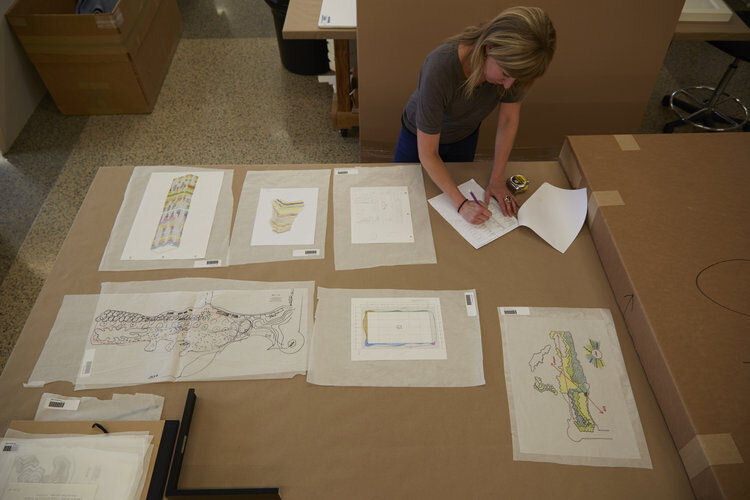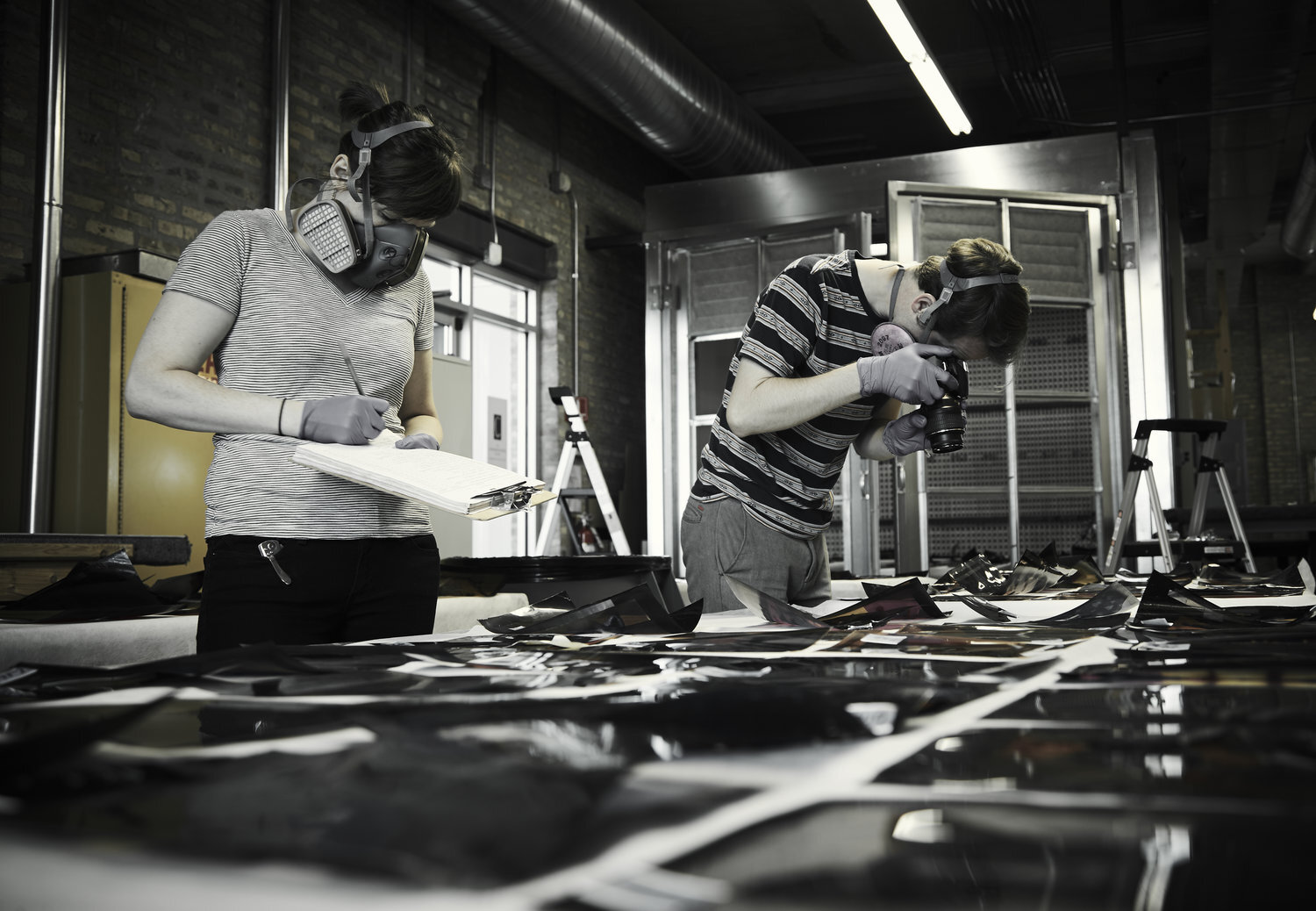President Dwight Eisenhower once said, "Plans are worthless, but planning is everything. There is a very great distinction because when you are planning for an emergency you must start with this one thing: the very definition of "emergency" is that it is unexpected, therefore it is not going to happen the way you are planning."
The team at The Conservation Center couldn't agree more. Disaster preparedness plans are often modified the moment they are put into action. Still, we know from years of experience that those who plan for likely scenarios are better positioned to respond to the unexpected.
Conservators perform triage work to a collection.
As we find ourselves at the start of another hurricane and wildfire season, we know it is daunting to prepare for the unknown. In the hope that you can better prepare yourself and your collection for the risk of flooding, fire, and natural disasters, there are some actions any homeowner or art enthusiast can take to be better prepared if tragedy strikes. But remember, while every collection is unique and more complex than we can address here, we hope this overview starts you thinking about your collection needs.
Know What You Have - Create an Inventory
Often, especially after the trauma of a significant event such as a fire, flood, or hurricane, there is little valuable time to take action to save your prized possessions. You may find yourself working with your insurance company, restoration or remediation companies, or disaster response aid workers - and communication will be key.
If you have valuable or personal significant possessions, it is essential to have an inventory of what you own. A detailed list may include an item’s size, medium, and location in the home. You may also want to include information on the value or purchase price, any artist information, or other essential details.
An inventory can significantly help as you work with teams at the disaster site. Being able to provide them with details on what items need to be retrieved and examined will improve the response efforts. And don't forget - keep your inventory list saved digitally too!
Take Pictures
If possible, include pictures of your art and antiques with your inventory. Images of the items before any damage occurs can be invaluable in many ways. Photographs can help identify damaged artwork at a disaster site. It can also help when working with your insurance company to determine the condition of the work pre-loss and provide the conservator with important information that can aid them in their treatment recommendations.
Reconsider the Basement, Attic, and Garage
We often treat items at The Center that have incurred damage due to their location in the home. Generally, art properly framed or otherwise on display in the home will fare better than those improperly stored. Typical locations like the basement, attic, and garage can be risky storage areas under normal circumstances. They often lack temperature and humidity controls and have increased risks of pests and moisture exposure, especially after a loss event. For example, family photographs stored in old albums or cardboard boxes can quickly stick together, damaging the image. Reconsidering how you have your treasured art and heirlooms stored, and seek advice if you have concerns.
What is your Coverage?
Lastly, consider if it is time to review your insurance coverage. If you are a renter and have items of significance, you may want to secure renters insurance. Homeowners may wish to revisit their policy. If you have made significant art purchases, you may have items in your collection deem scheduled coverage. Speak with your insurance broker to make sure you understand your coverage; you don't want to find out you are under-insured after filing a claim.
The Conservation Center's CEO, Heather Becker, has said, "In a world of increased challenges posed by everything from the weather to human actions, preparedness is something that not only museums but all collectors should think about." Every situation and collection is truly unique, and an ounce of prevention is worth a pound of cure. If you are interested in learning more about disaster preparedness for your collection, The Conservation Center's staff is ready to help.






